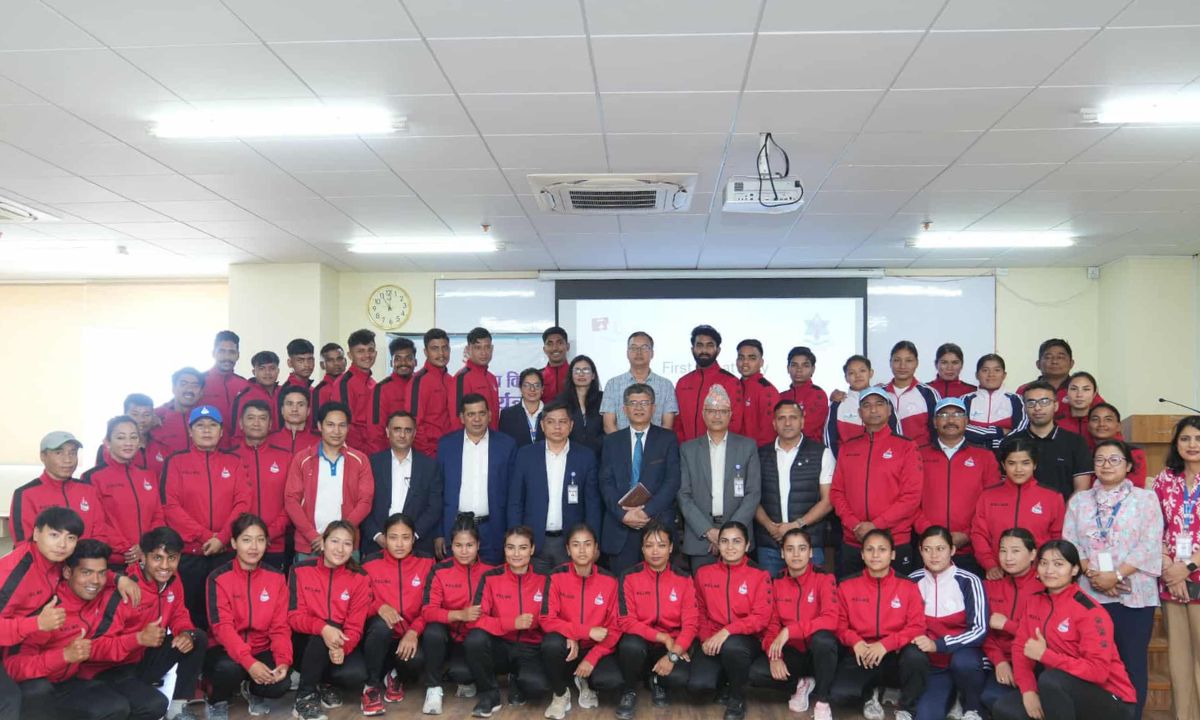An awareness program on player injury prevention was successfully organized on Monday by the Ministry of Youth and Sports. The event aimed to train national-level athletes and coaches on how to handle sports injuries effectively during matches or training.
Awareness Program Training Led by Medical Experts
The event was coordinated with the National Academy of Medical Sciences (NAMS). Participants received hands-on training on immediate response techniques for injuries that may occur during gameplay. The session was led by several medical professionals, including:
- Prof. Dr. Raviram Shrestha
- Associate Prof. Dr. Rishi Bista
- Dr. Luna Sharma Khanal
- Associate Prof. Dr. Ritu Pradhan
- Dr. Nirman Prasad Gyawali
- Associate Prof. Dr. Abhay Pokharel
These experts provided practical knowledge and first aid strategies, helping participants understand how to reduce the impact of injuries and respond quickly.
46 Participants from National Sports Teams
A total of 46 individuals — 40 players and 6 coaches — took part in the session. All participants are currently undergoing special training under the Mission 2026 campaign led by the National Sports Council (NSC). The teams included players from Wushu, Judo, and Kabaddi.
High-Level Officials Attended
Several key figures from the sports and medical sectors attended the event, including:
- Prof. Dr. Bhupendra Kumar Basnet, Vice Chancellor of NAMS
- Tanka Lal Ghising, NSC Member Secretary
- Dr. Hari Prasad Lamsal, Secretary, Ministry of Youth and Sports
- Dr. Min Chandra Adhikari, Associate Director, NAMS
- Dr. Gyanendra Bikram Shah, Registrar, NAMS
- Ramcharitra Mehta, Joint Secretary, Ministry of Youth and Sports
- Deepak Bista, Director of National Team Preparation
Their presence added significance to the program and showed institutional commitment to the prevention of player injuries.
A Step Toward Safer Sports in Nepal
The awareness program on player injury prevention marks a vital step toward ensuring athlete safety in Nepal. With proper training, both players and coaches can now better manage and respond to injuries, potentially reducing long-term risks.




